4 min read
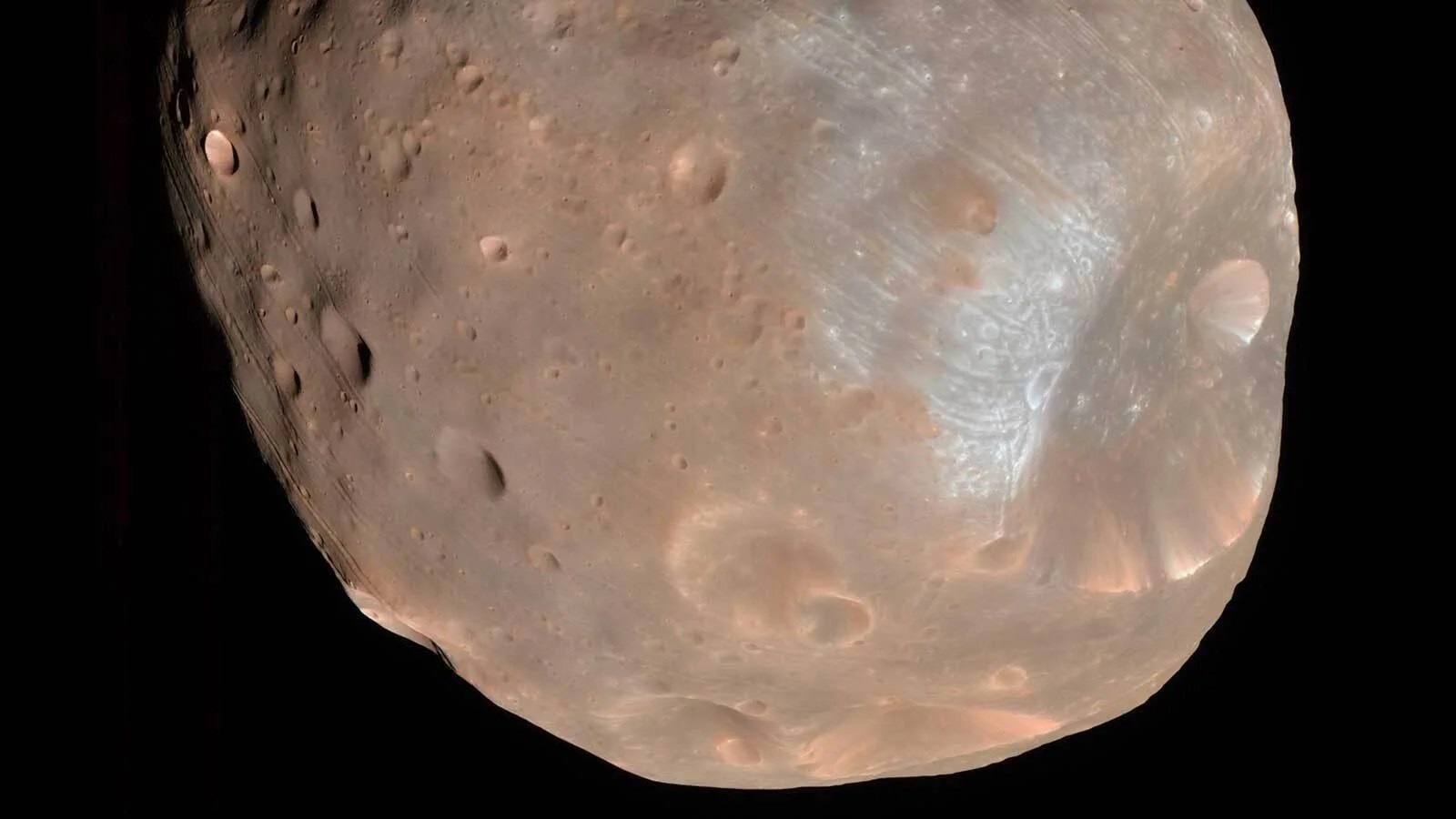
There are Super Bowls, and then there are super bowls. When it comes to impressive valleys, craters, and canyons, the solar system has plenty of record-setters to explore. Here are 10 impressively super, bowl-shaped venues adorning worlds in our solar system, including a couple where we've actually made…touchdowns!
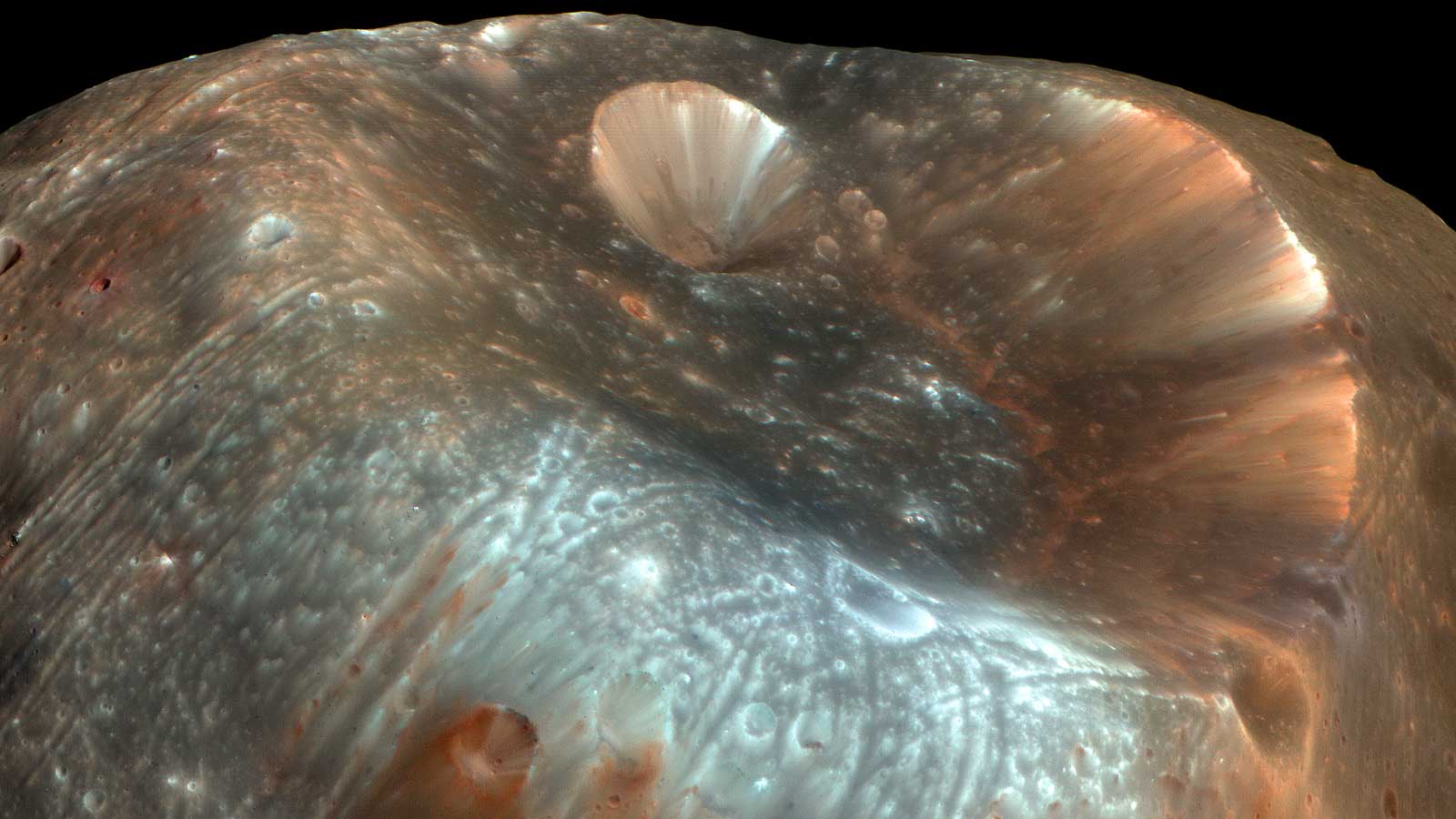
Stickney is the largest crater on Phobos, and a defining feature of the little moon. It’s about 6 miles (10 km) in diameter. Stickney also has a smaller crater inside it. For extra points, note that if the average speed of an NFL throw is 50-60 mph, and the escape velocity of Phobos is 25 mph, then it's conceivable that a pro quarterback could throw a ball right off Phobos and into orbit around Mars.
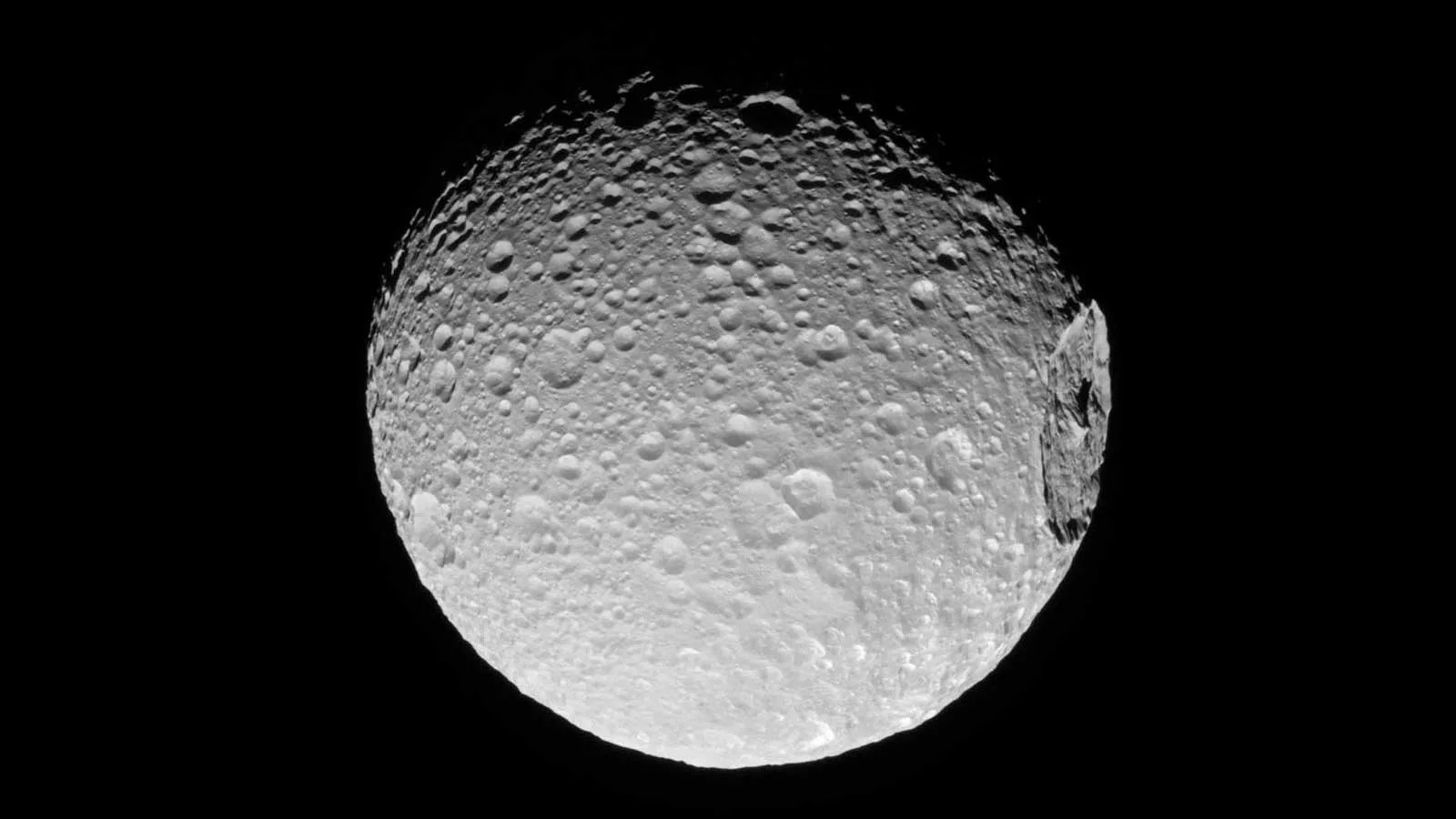
The gigantic crater Herschel is near the limb of Saturn’s moon Mimas in this image taken by NASA’s Cassini spacecraft. Even the fastest running back would take a while to cross a Herschel-sized football field – the crater is 246 miles or 396 kilometers across.
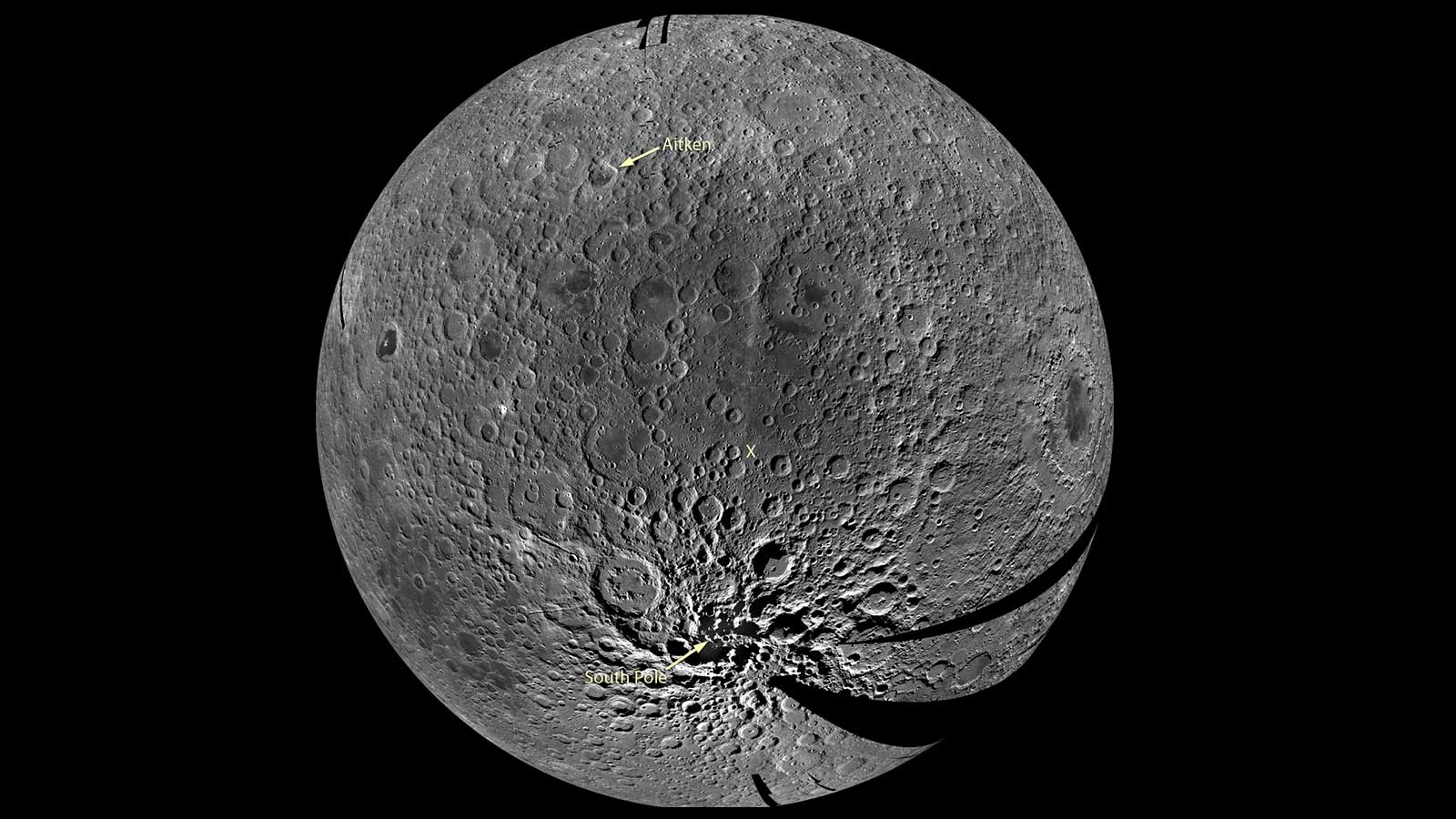
Aitken Basin is the largest and oldest recognized impact basin on the Moon. “Basin” is what geologists call craters larger than about 186 miles (300 kilometers) in diameter, and Aitken Basin certainly qualifies. The basin’s diameter is roughly 1,550 miles (2,500 km), and it stretches across nearly a quarter of the Moon.
This mosaic of images taken by NASA’s Lunar Reconnaissance Orbiter centers on the middle of Aitken basin. Arrows near the top and bottom point to Aitken crater and the lunar south pole, which lie along the basin's rim. A big plus: on the Moon, you could throw the ball about six times as far as you could on Earth.
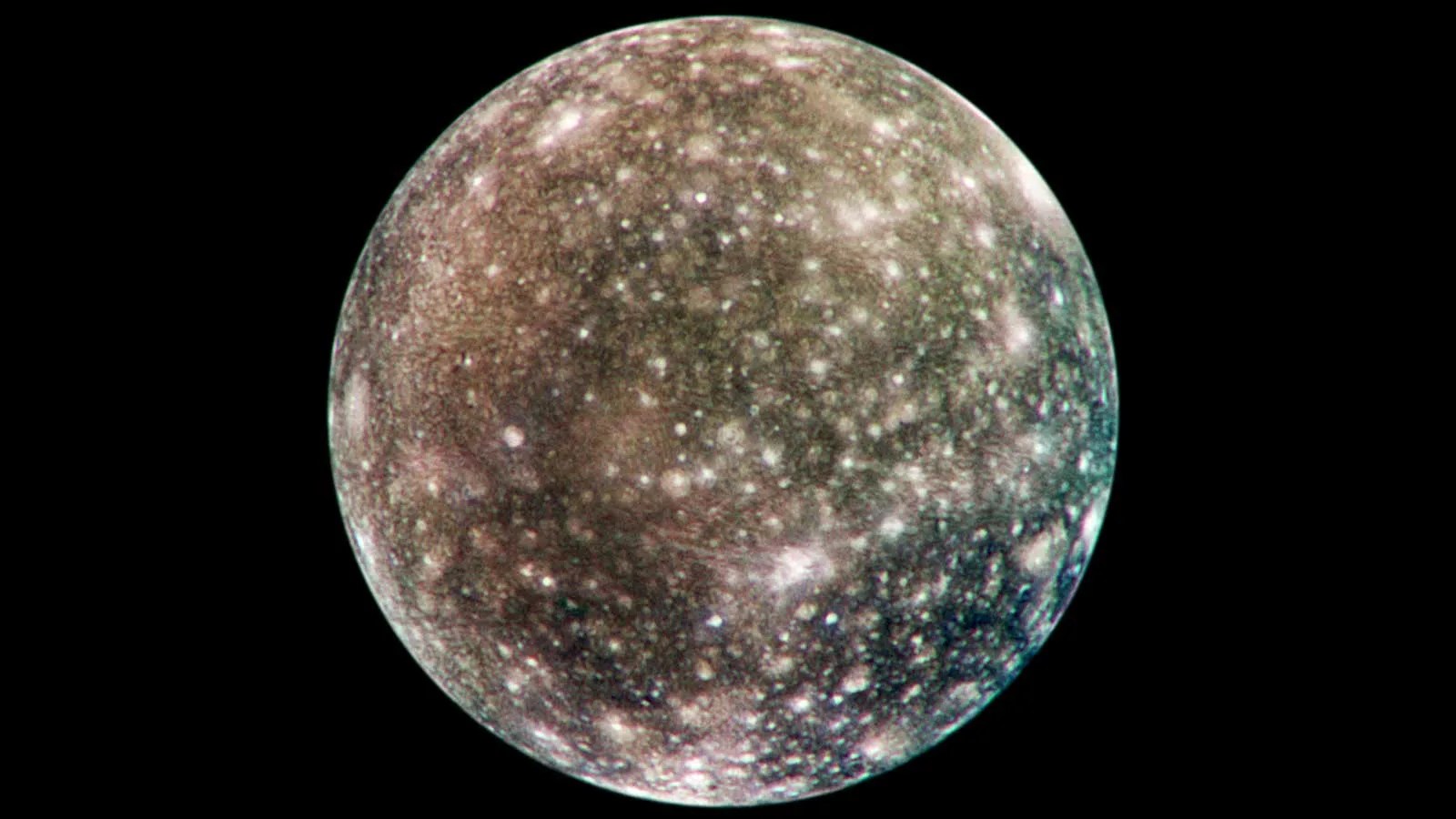
Jupiter’s moon Callisto is the GOAT (greatest of all time) among cratered moons. It has more craters than any other moon in our solar system.
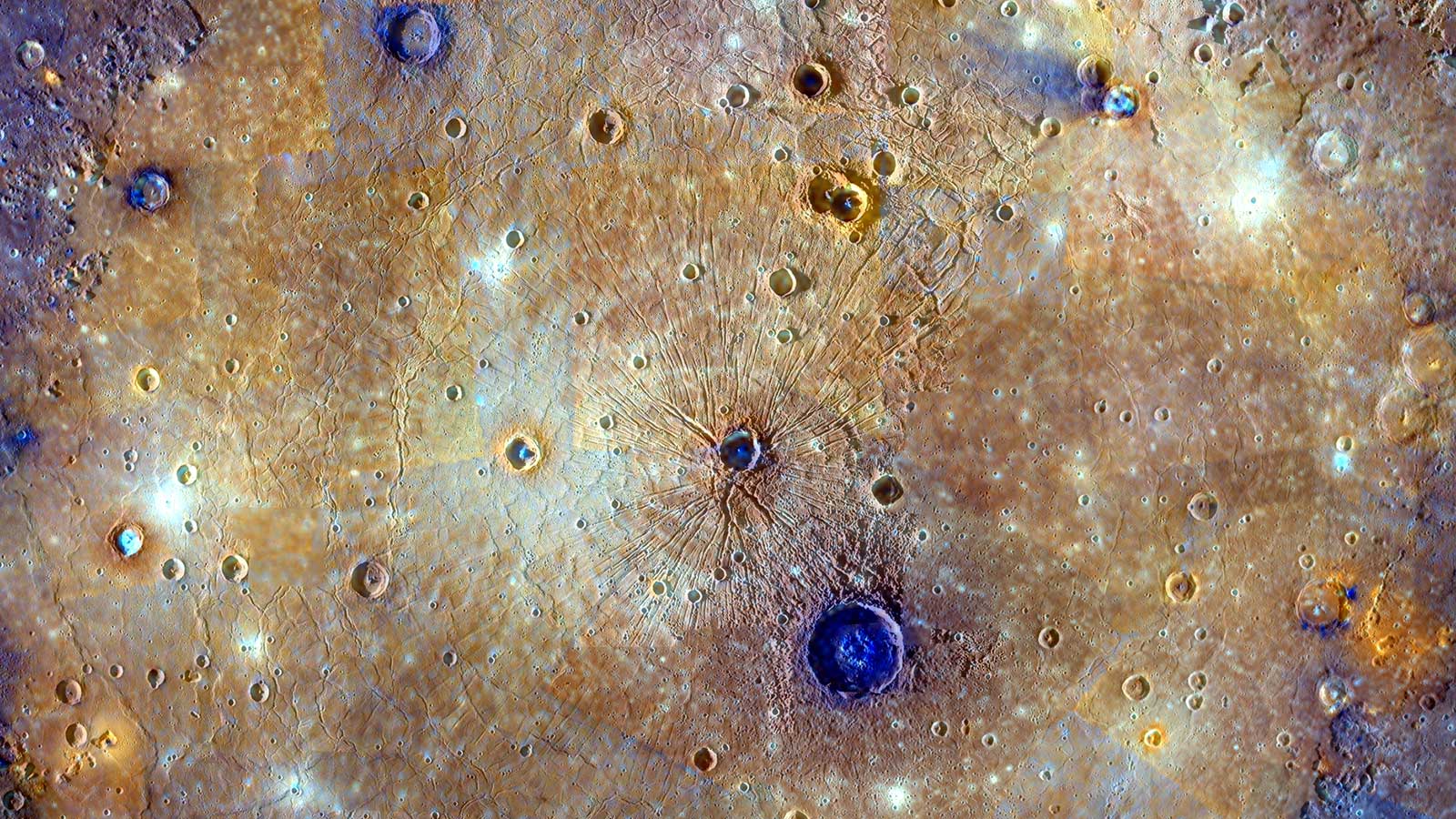
Caloris Basin is Mercury's youngest large impact basin. The interior smooth plains of the crater cover an area approximately the area of Alaska! Over 640 Rhode Islands would fit inside this massive basin!
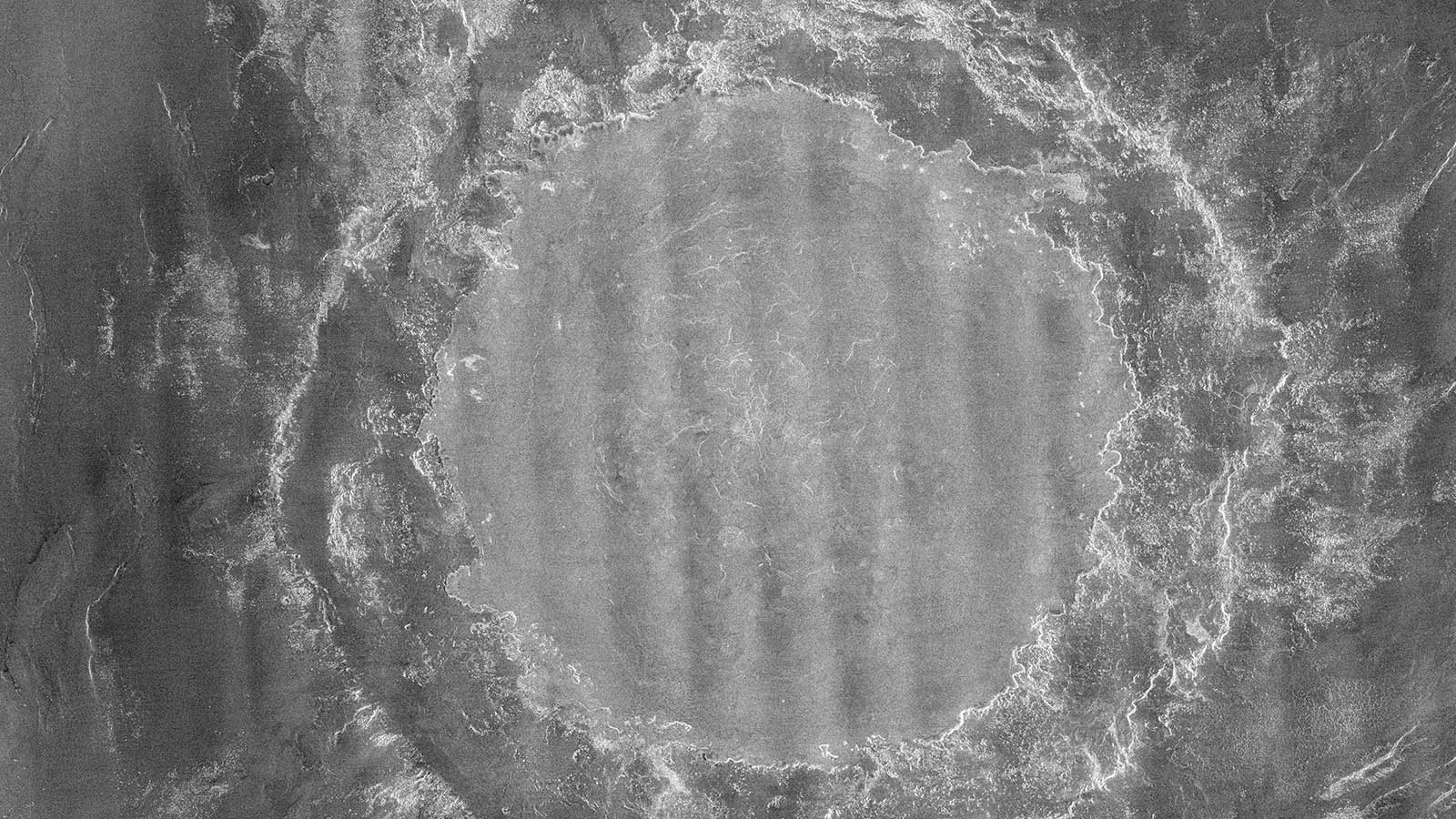
This mosaic of radar images from NASA’s Magellan spacecraft shows one of the largest impact craters known to exist on Venus. The crater is 170 miles (2745 kilometers) in diameter. The crater is named for anthropologist Margaret Mead. She also has some schools named after her, and so, a few football teams as well.
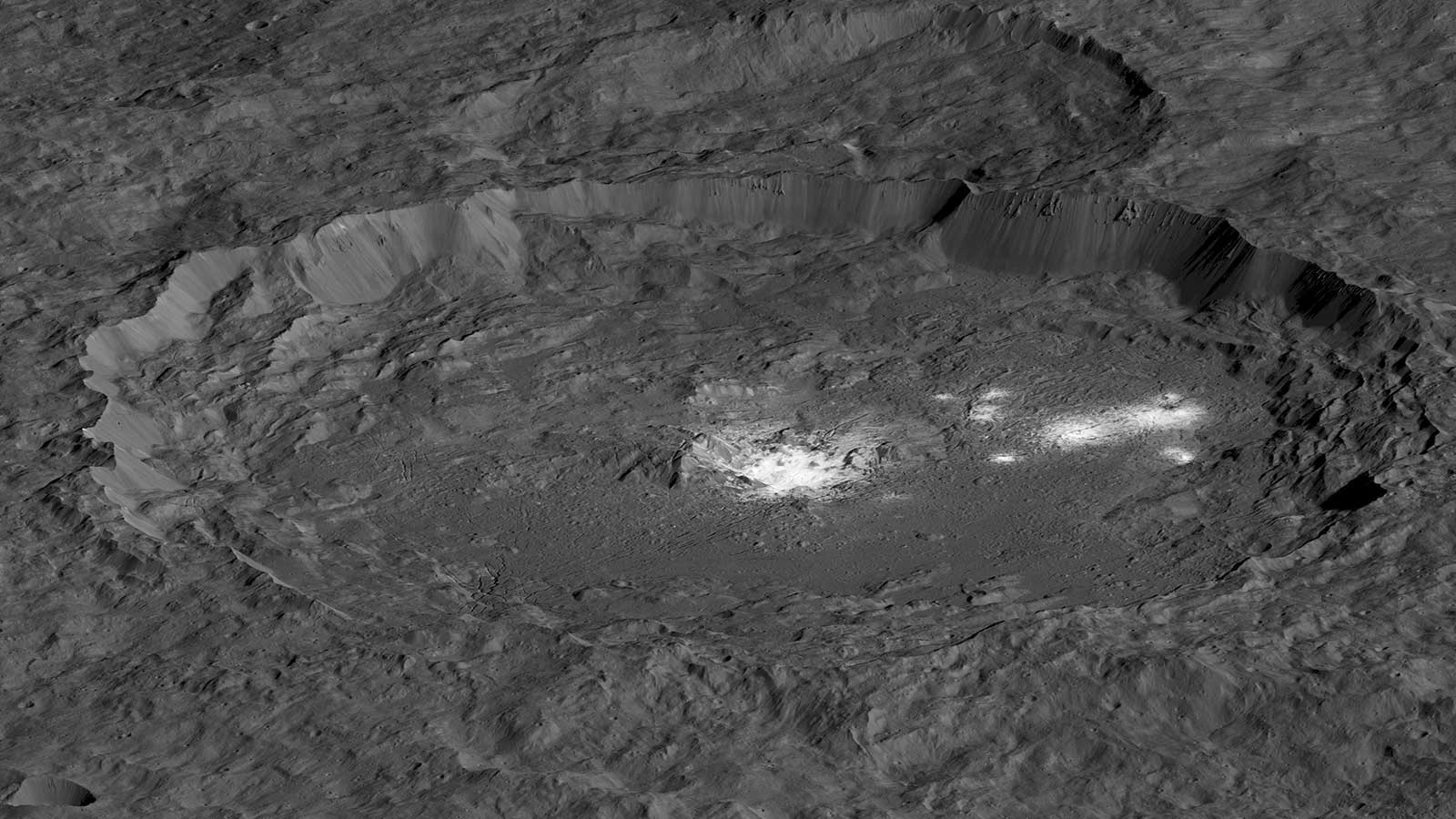
Dwarf planet Ceres’ Occator Crater is 57 miles (92 kilometers) across and 2.5 miles (4 kilometers) deep. It also has the brightest area on Ceres – some highly reflective salt deposits.
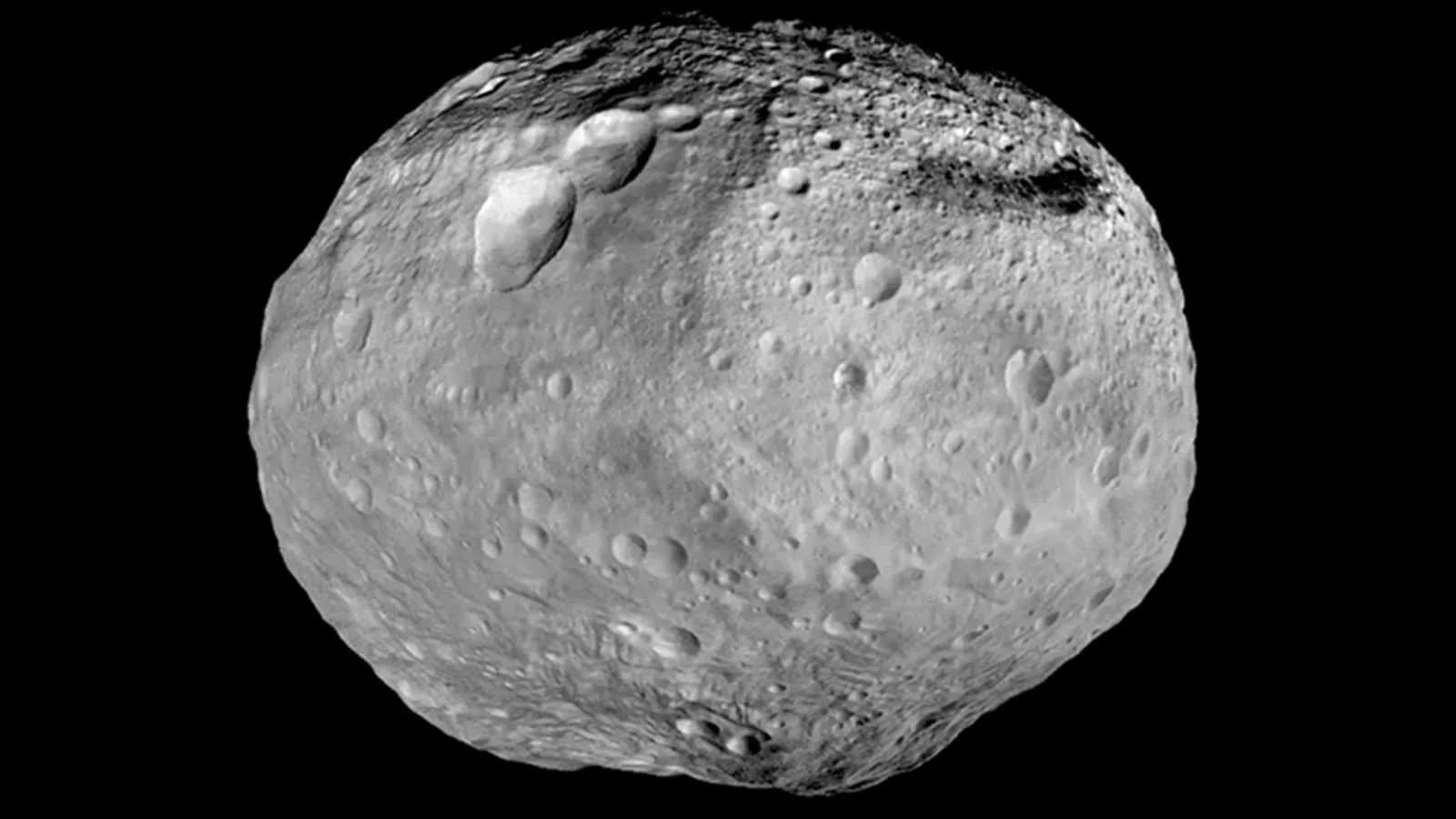
Asteroids and comets cause most of the craters on planets and moons. But asteroids take their hits, too. About twice the area of California, Vesta is the second largest object in the asteroid belt after the dwarf planet Ceres. It’s covered in craters. (And it looks a bit like a football in this view.)
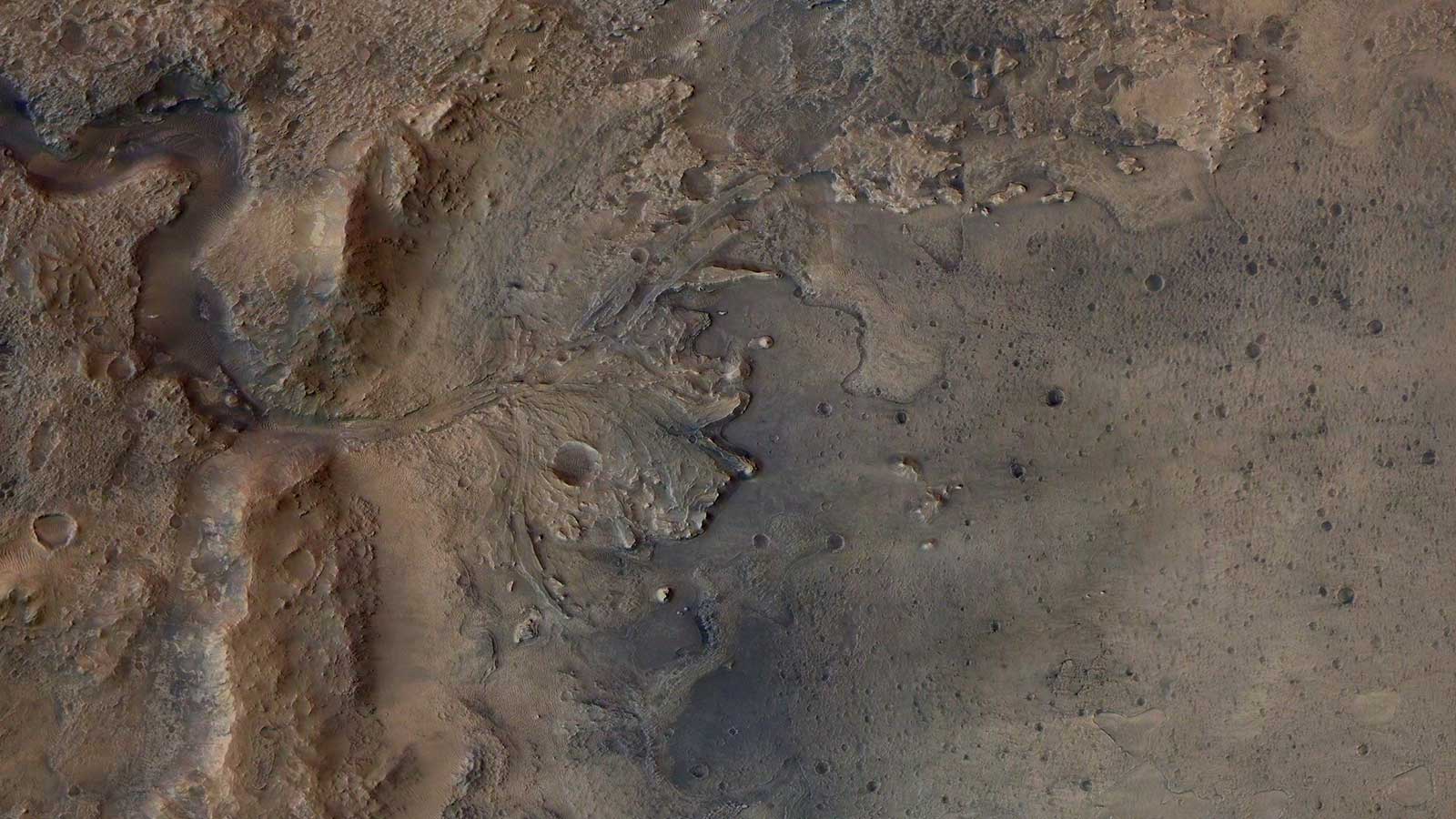
Mars has lots of craters, but if you want to hang out in a crater - why not pick one inhabited by NASA’s newest rover, Perseverance. The rover made its touchdown on Feb. 18, 2021. We think that’s super on many levels.
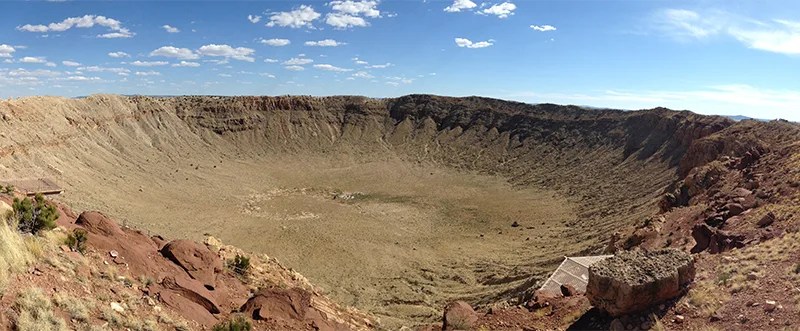
Meteor Crater (also known as Barringer Crater) near Winslow, Arizona, is only 50,000 years old. That’s young for a crater, so it’s unusually well preserved in the arid climate of the Colorado Plateau. It's bigger than your average stadium, at 0.75 miles (1.2 kilometers) across and about 600 feet (180 meters) deep. And although you won't find bleachers or goal posts there, it is a perfect place to learn about geology. The Apollo astronauts trained there before their missions in the ‘60s.

Yes, we promised you 10 Things, but how about some extra points? Saturn's moon Hyperion is strange, to say the least. It’s covered in craters, it is odd-shaped, and looks kind of like a football in this image from NASA's Cassini mission. And it’s tumbling! Hyperion’s craters are particularly deep and look curiously punched-in look, somewhat like the surface of a sponge or a wasp nest.
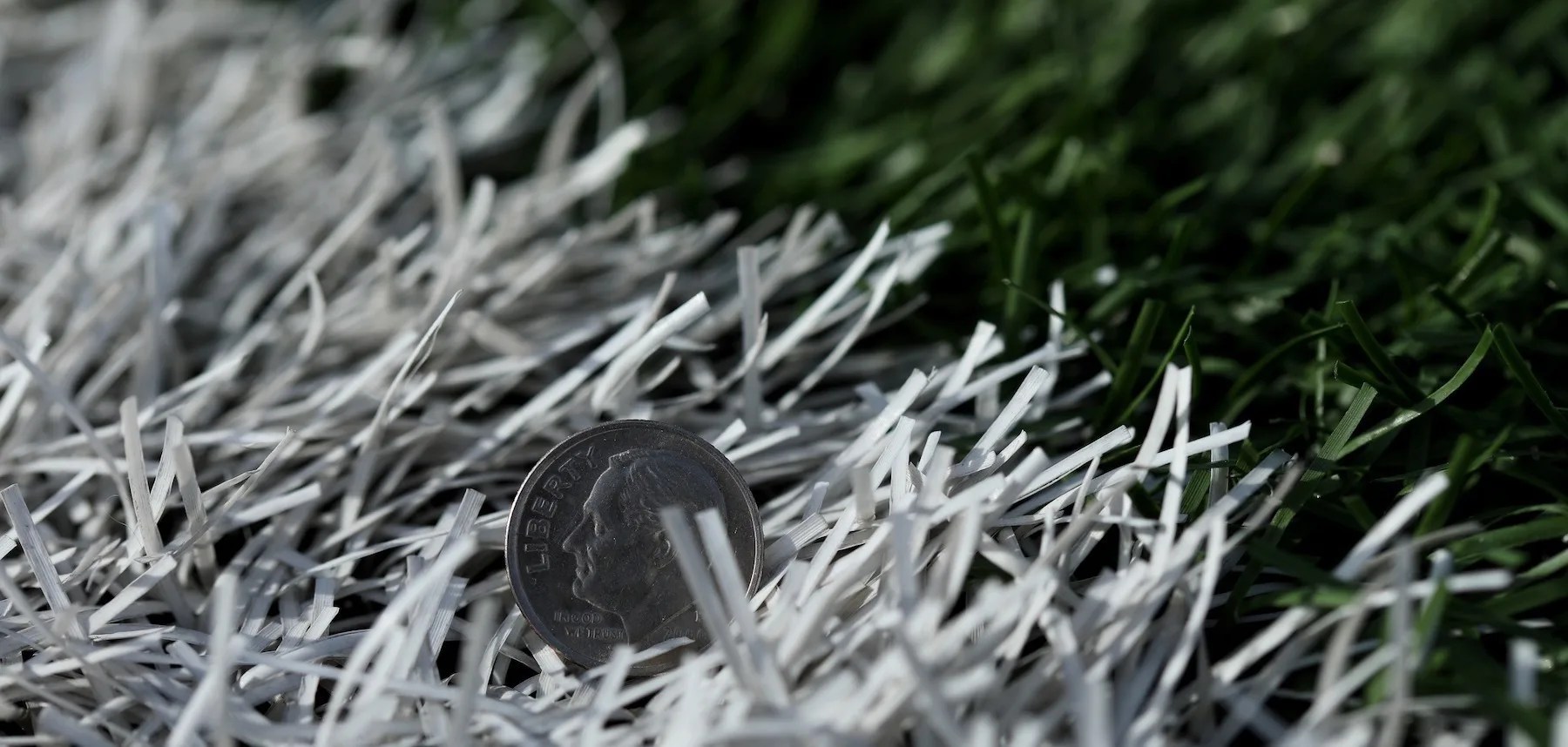
In an effort to bring the vastness of our solar system down to Earth, we've shrunk the solar system to the size of an American football field. If the Sun were the size of a dime on the goal line, Neptune would be 60 yards away. (Click the link above to read on.) You won the toss, kick off and enjoy.







